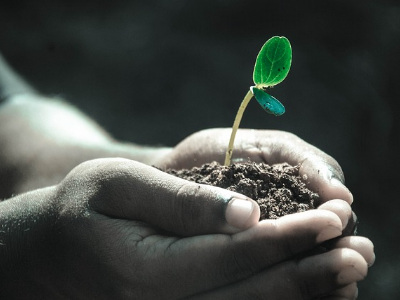Alternative packaging materials are becoming more and more popular over the last few decades. In the packaging industry, we see alternatives such as plant-based plastics (A.K.A. Bioplastics), mushroom root, seaweed water bubbles, palm leaves and wood pulp cellophane.
Major developments were made in the last couple of years, and compostable packaging is the leading trend these days. Now, plantable packaging is stealing the spotlight as the next big thing. Here is everything to know about this interesting packaging alternative.
 The idea behind plantable packaging is quite brilliant. It is meant to decompose, just like compostable packaging, and it also contains seeds that allow the package to be buried in the soil and flourish flowers or herbs.
The idea behind plantable packaging is quite brilliant. It is meant to decompose, just like compostable packaging, and it also contains seeds that allow the package to be buried in the soil and flourish flowers or herbs.
The first company that introduced plantable packaging was Pangea Organics, which collaborated with Seeds of Change to create a series of skin-care products packed in a 100% compostable fiber box.
The great thing about plantable packaging is that you can match the seeds to the product that’s packaged. Ben Huttly from the Arts University College at Bournemouth developed a plantable packaging solution for fruits and vegetables that is quite genius. A wrap-up string made from biodegradable unbleached cotton binds together the product (like asparagus). The package contains a piece of plantable paper formed with thousands of tiny seeds that will sprout when planted in soil.
Another great use of plantable packaging is demonstrated by UK designer Connor Davey, who created chocolate packaging that grows into the chocolate’s main ingredient when planted. For instance, the mint chocolate packaging grows a mint plant, while the chili chocolate grows a chili plant, so the product could basically last forever.
Plantable packaging is a great way to save our environment, something that a lot of people are passionate about. Undoubtedly, the packaging industry will have a lot more to offer for our planet in the future.
